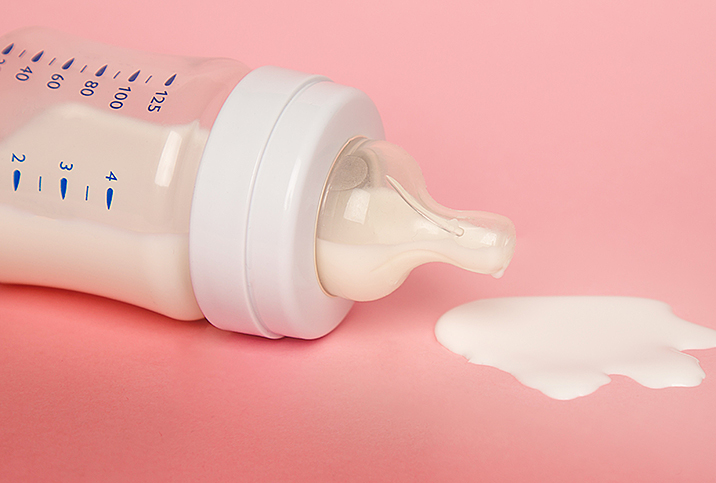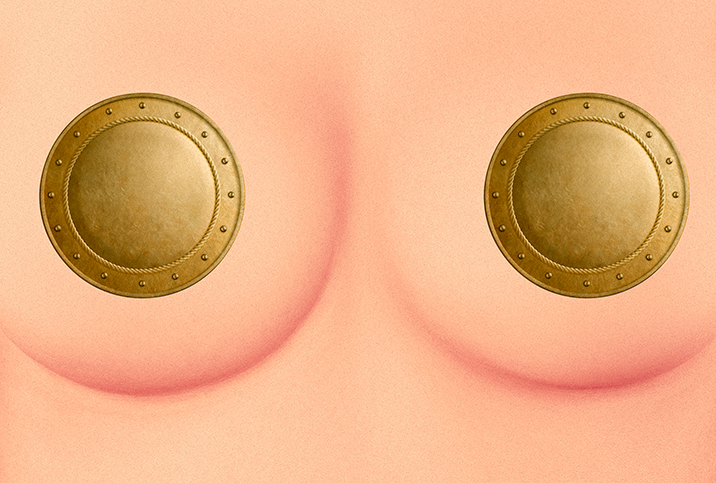Breastfeeding as Birth Control Is More Complex Than You May Think

Considering the myriad side effects of hormonal and nonhormonal contraceptives, a form of birth control provided by your own body sounds almost too good to be true. Throw in that this method requires many hours per day, only provides temporary immunity and requires a person to already have another baby—and this method is starting to sound more in line with the familiar tradeoffs of contraceptives.
According to Abrie McCoy, a certified lactation counselor with SimpliFed, lactation post-delivery can prevent immediate pregnancy. "The Lactational Amenorrhea Method (LAM) [means a] lactating parent must be exclusively breastfeeding (nothing other than breastmilk) at least every four hours during the day and every six hours at night—directly at the breast," McCoy said. "Studies have found that when LAM is followed strictly, pregnancies at the six-month postpartum mark were at 2 percent."
While it is within your body's best interests to conserve energy for the newborn rather than immediately preparing for another baby, the female body doesn't allow for many loopholes with LAM.
LAM isn't at all viable for parents of babies receiving supplemented diets or formula, or mothers pumping milk, whatever the reason. This is true whether a mother works and pumps to use later or a mother primarily breastfeeds but indulges in the occasional pump and dump (the colloquial phrase for when substances such as alcohol are ingested that babies shouldn't consume and so certain batches of breastmilk are thrown out).
'Studies have found that when LAM is followed strictly, pregnancies at the six-month postpartum mark were at 2 percent.'
As paradoxical as it sounds for a baby to be integral to a form of birth control, the physical presence of a newborn is what sends the biological cue to produce high enough levels of prolactin to suppress ovulation. Even then, the immunity lasts only six months at most due to the child's natural development.
Once a baby is ready to incorporate new foods in their diet, as opposed to exclusively deriving nutrition from their mother's milk, fertility returns. This occurs despite the baby still breastfeeding. Once the baby is breastfeeding fewer than four hours a day, the body doesn't receive frequent enough cues for hormonal production to prevent pregnancy.
Time restraints aside, new mothers are advised to discontinue LAM as soon as they have symptoms of menstruation. Lochia, or bleeding resulting from giving birth, should resolve within two to six weeks postpartum. Thus, lochia should have long since ceased once a mother is months out from delivery, meaning there shouldn't be any confusion between menstrual blood and post-delivery bleeding. However, nurse-midwife Adrienne Crowe (and mother to the author) cautions against only waiting for the resumption of menstruation to worry about pregnancy.
"An indicator that LAM is no longer effective is when a woman begins to ovulate, but the issue there is that you can ovulate prior to menstruation," Crowe said. "Uterine bleeding can signal other conditions but is most likely an indication your body has resumed ovulation. However, ovulation can occur without that external warning sign."
This is an essential difference between ovulation and menstruation that may seem overly technical, but it's the lynchpin determining whether or not LAM can serve effectively as birth control for you.
Crowe said that a woman could unknowingly begin ovulation again while assuming her body has paused the process because she has no menstrual blood yet. Then, depending on how much sex you're having in the first six months postpartum, a primed egg would be ready and waiting for fertilization.
While LAM is a well-documented technique with fairly high levels of efficacy, there are other safe options for breastfeeding mothers, according to McCoy.
"Other methods may be handy to use in addition to LAM or even in place of, natural family planning being one of them," McCoy said. "This method tracks ovulation. The downfall is there are many methods and room for user error."
"There are other safe contraceptive methods: barriers, IUDs, progestin-only hormonal birth control and sterilization," McCoy continued. "Contraceptive methods are all dependent on the situation and should be talked through thoroughly with your healthcare provider."
While sterilization may be intimidating or unwanted, ovulation tracking can also be unappealing in the amount of work required even to women who aren't tasked with caring for a newborn. Balancing parenthood with natural family planning should be considered with a healthy dose of realism.
Only some hormonal forms of birth control are effective while preserving the ability to sufficiently breastfeed.
"Combination hormonal birth control containing estrogen and progesterone are to be avoided, including transdermal methods like the Xulane patch," Crowe said. "Progesterone-only pills don't interfere with breast milk production but must be taken within the same four-hour window daily, so I typically recommend women take the pill at exactly the same time every day. Shoot for the moon, land in the clouds."
Estrogen impedes milk production in some women by blocking the production of the aforementioned prolactin. For those seeking hormonal methods while also breastfeeding, birth control must be progesterone-only.
This information is complex and may be overwhelming to a new mom with 1,000 other things to think about postpartum. The best way to make an educated judgment before entrusting your family planning to any one method is by discussing your situation with your medical healthcare provider.



















